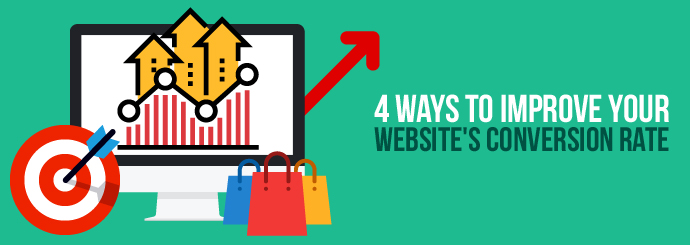
The nature of your website and the specific goals of your business will dictate what a conversion looks like for you. If you have a high conversion rate, congratulations! This is an indicator that your marketing strategies are succeeding, your website works well, and your users are satisfied.
However, if you've noticed that your conversion rate is lower than you'd like, there are a few things you can do to improve it.
What is a 'conversion'?
Every time a user completes a desirable action, we count it as a conversion - but conversions look different on different websites. For example, if you're a blogger, you might consider each subscription to your blog as a conversion; if you have a brochure site that tells people about your services, you might consider enquiries as conversions; and if you have an ecommerce website, you'll count every successful sale as a conversion.
You might track multiple conversions to make sure that all aspects of your business are growing and working in unison. For example, with an ecommerce site, you might consider sales as your most important conversion while still keeping a close eye on the number of newsletter sign-ups, social media interactions and enquiries too. Together, these conversions will help to give you a more detailed picture of your site's overall performance.
Over time, you will start to see which things convert well on your website and which things don't. It's normal for things to fluctuate a bit, but if something is performing particularly badly, try the following tips.
1. Make sure your website is user-friendly.
Put yourself in the shoes of the user and test your website from their point of view. Does it work well across different devices? Do you notice any areas that could be improved? Did everything work properly? Think about it: if someone visits your website and struggles to figure out where something is or comes across a technical issue, then your conversion rate is likely to be much lower than it should be.
Improving the user experience is a great place to start if you want to improve your website's conversion rate. Here's how you can do it:
- Tweak the menus so they are easier to navigate
- Ensure your site works across all devices
- Check the functionality of buttons/forms across the site
2. Drive more relevant traffic to your site.
If you notice that your conversion rate is low in comparison to the number of visitors arriving on your site from day to day, then you might be driving the wrong kind of people to your site. Investing in a range of marketing strategies like Google Ads, social media and email marketing can help boost relevant traffic to your website.
Why? Because you can use these tools to target audiences who are likely to convert. For example, people who have visited your site before or people who are already interested in your industry.
Here are a few things to consider when you're trying to boost relevant traffic to your site:
- Include a call to action in your marketing material so users what you want them to do
- Invest more money in the marketing strategies that convert well
- Refine your target audiences
- Produce content that will appeal to them
3. Make sure your web pages are easy to digest.
Users don't interact with websites in the same way they'd interact with a book or newspaper. In fact, unnecessary long-form text can actually do more harm to your site than good. If users don't find what they're looking for quickly, it's likely that they'll lose interest and move on to a different website, at which point, you've lost all chances of conversion.
What can you do to combat this? Start by taking time to craft your copy so that it's easy to digest, engaging and highly relevant to your site. Embolden anything that you think needs extra emphasis and break longer points up using paragraphs or bullet points.
Revise the layout and copy on your website so that your main selling points and call to actions are more prominent. Drawing the user's attention to these things will make it easier for them to decide whether to convert or not.
4. Keep your graphics relevant and minimal.
Images are a necessity, especially on ecommerce websites where customers need to see the products they want to buy. They can show off your products or promote a spectacular deal, but all too often they are overused.
Having too many graphics on a page can distract people from their objective and reduce your chances of a conversion, so finding a good balance is key.
There are plenty of platforms that you can use to share photos and graphics related to your business. Instagram and Pinterest are two of the most popular, but there are plenty of others to choose from. Perhaps you would be better saving those 'behind the scenes' shots for your social media rather than sharing them all over your website.
By reducing the visual clutter on your website, you make the journey on your site more streamlined and improve your page loading speed. Faster pages and an overall better experience on your website feed back into better usability, thus encouraging more conversions!
Note: Improving your conversion rate is not something that will happen overnight. We'd recommend trying one of these tips at a time and leaving your site alone for a few weeks to accurately assess the effects. If you make multiple changes at once, you'll never know what worked and what didn't.
If you'd like to talk to our experienced team of developers and SEO specialists about improving your website, don't hesitate to give us a call on 01446 339 050.
Contact Designer Websites